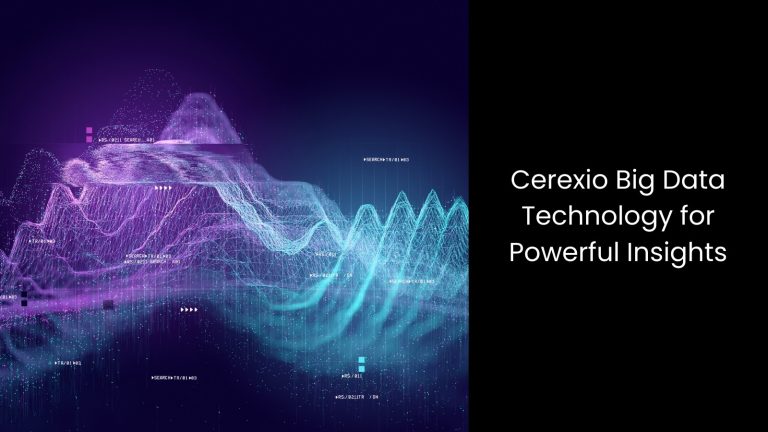Data is a specific term that has gained momentum over the years due to its power. Now the whole industrial world revolves around data. Manufacturing is one such industry that heavily relies on data management. This is why they tend to opt for various technologies that will aid them in handling data from its initiation point to extracting insights from it at the last resort. Understanding these inefficiencies, the world is moving away from traditional data towards the adoption of ‘Big Data’ technologies at the moment.
In this article, we will understand what this Big Data technology is and its main components.
We will know
What is Big Data Technology?

- As its name suggests, Big Data Technology is all about managing a large volume of data.
- It includes a range of tools and techniques designed to handle, process, and analyse extremely large and complex data sets that conventional data processing systems cannot manage efficiently.
- This technology includes specialised databases, powerful computing systems, and advanced algorithms that can store, retrieve, and analyse data at high speeds. It can be put this way: if we consider one company, they have an enormous volume of data generated daily from social media, online transactions, production floors, scientific research, etc.
- Those days, when the companies had traditional data systems, they would struggle with such a scale. However, big data technology can manage and analyse this information to uncover patterns, trends, and insights, no matter how massive the data volume is.
- It is associated with distributed computing, where data is processed across multiple servers, and machine learning algorithms. This will help companies learn from the data and make predictions or decisions.
- So the sole objective of Big Data technology is to receive, process, and transform a massive amount of data into meaningful insights. This way, big data technology significantly enhances the ability to make informed decisions and solve complex problems across various domains with ease.
The Main Components of Big Data

Data Sources
This is where the function of Big Data starts.
Data sources serve as the origins of the vast amount of information analysed to improve processes and efficiency. These data sources can include various channels, such as devices, social media platforms, websites, Internet of Things (IoT) sensors, etc.
In a setup like manufacturing, they have a diverse range of devices, like machines, on factory floors. Organisations constantly generate data through this method, while social media platforms and websites offer insights into customer preferences and market trends.
On the other hand, smart manufacturing technologies such as IoT sensors, Artificial Intelligence tools, CCTV, etc. are embedded in equipment, and they keep collecting real-time data on performance and conditions.
But the problem lies here. All these sources contribute raw data, and no insight can be extracted directly from them. These data volumes have to undergo proper analysis to extract valuable information. This is where the data sources connect with the rest of the procedures.
Data Collection
This is the second component of big Big Data technology.
This is actually where it involves the gathering of information from different sources, ensuring its correctness, and arranging it for analysis. If you are confused between the first component and this, let us explain it to you. Data sources and data collection are different procedures, yet they are strictly interconnected. There is no data collection without data sources!
This process captures data from various data source points, such as machines, sensors, and production systems. This is truly like assembling puzzle pieces. Each piece of data contributes to the bigger picture of understanding operations and improving efficiency.
This data collection process cannot be done without the help of other relevant technologies like 5G, Streaming Data, and all. Depending on the specific need, data can be collected either in batches, where they gather information periodically, or in real-time.
Then, there is a need for this consolidated data to be stored.
Data Storage
Data storage is a crucial part of big data technology in manufacturing.
It handles the large amounts of different kinds of data that manufacturing produces.
As you can see, manufacturers are employing several types of storage solutions.
For example, traditional relational databases store structured data in tables. NoSQL databases are more flexible and can handle unstructured data like text and images.
On the other hand, data lakes are big storage spaces that keep raw data in its original form until it is needed.
Plus, manufacturing companies and other entities that have a massive load of data usually maintain distributed file systems like Hadoop HDFS, which spreads data across many machines, making it easy to process large datasets quickly.
Together, these storage solutions help manufacturers manage and use their data effectively.
Data Processing
This is the main part of this framework.
This is where technology keeps changing raw data into useful information. Technologies like Apache Spark and Hadoop MapReduce help with this by allowing fast and efficient data analysis and manipulation.
When it comes to Apache Spark development, it can process data quickly by distributing tasks across multiple computers. On the other hand, Hadoop MapReduce breaks down large data tasks into smaller parts, processes them, and then combines the results.
Also, the data processing frameworks provide tools and systems to manage and analyse data efficiently. These technologies help manufacturers understand their data, leading to better decision-making and improved production processes.
Data Analysis
This step is an advanced stage.
It uses different techniques to find patterns, trends, and relationships in data, and this is where we witness manufacturers using Data Analytics technology.
There are four main types of data analytics. As the first element, Descriptive Analytics looks at what occurred in the past. Then the Diagnostic Analytics explains why something occurred in a certain way.
The most commonly employed one is Predictive Analytics which uses data to forecast future events. Last but not least, Prescriptive Analytics suggest actions to take based on the data.
Not to mention that machine learning (ML) and AI integration play important roles in this venture. ML algorithms learn from data and improve over time, while AI can make smart decisions. These analytics help manufacturers improve their processes, make better decisions, and stay competitive.
Data Visualisation
What use of data if it is not understandable?
This is the theory that applies to the data visualisation step.
It helps communicate complex insights in an easy-to-understand way. Manufacturers deploy various tools to create visual representations of data, such as charts, graphs, and maps.
These tools have to be user-friendly and must allow interactive data exploration. Also, they are supposed to integrate well with other Microsoft products and offer powerful data analysis features. Plus, there are many tools that help create custom and dynamic visualisations on the web.
By turning data into visual formats, these tools make it easier for people to see patterns, trends, and insights. This helps manufacturers make better decisions and understand their data more clearly.
Cerexio Big Data Technology for Powerful Insights

Cerexio-initiated Big Data Technology is the ideal solution to formulate a data-driven culture within your manufacturing realm. Our solution offers intelligent pathways that employ Big data, filtering, and standardising complex data structures to provide actionable insights. Our tools enhance data handling, cleansing, and security. With Cerexio Solutions, your data structure is completely secure.
Working through Big Data for Manufacturing Excellence

There is no stopping the data that keeps being generated on the manufacturing floors. You must have a proper solution to handle such a sea of data with much care and protection. Collaborating with a reputed partner will keep your data management worries away for sure.
